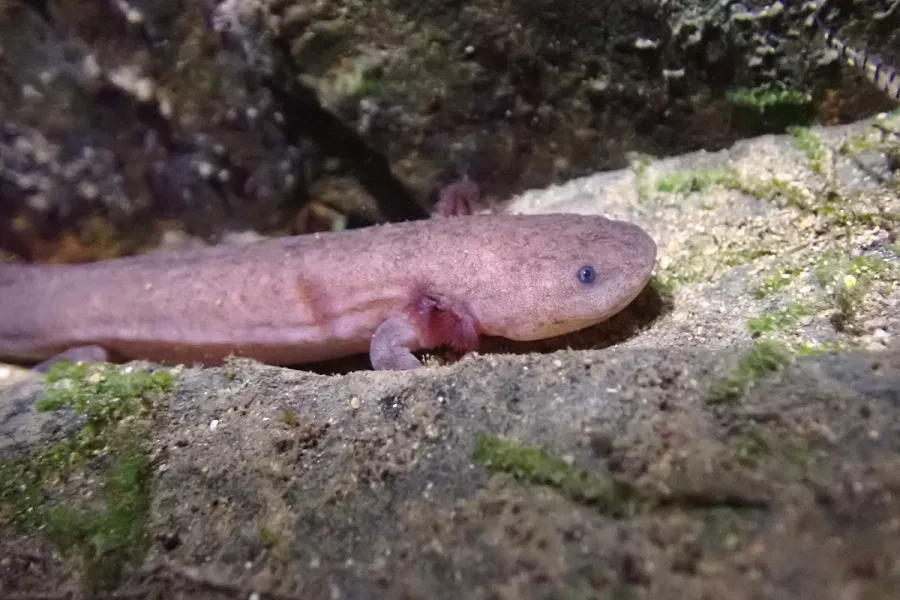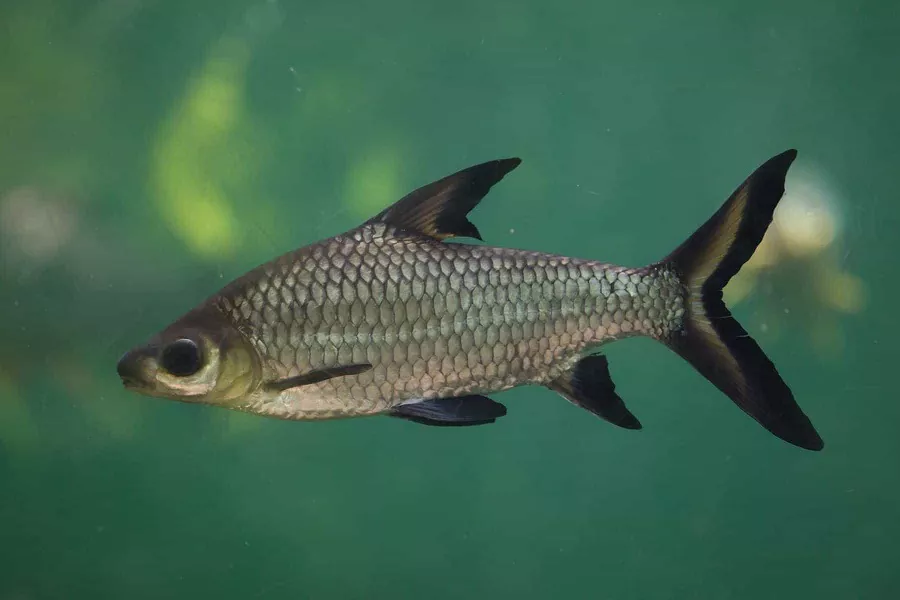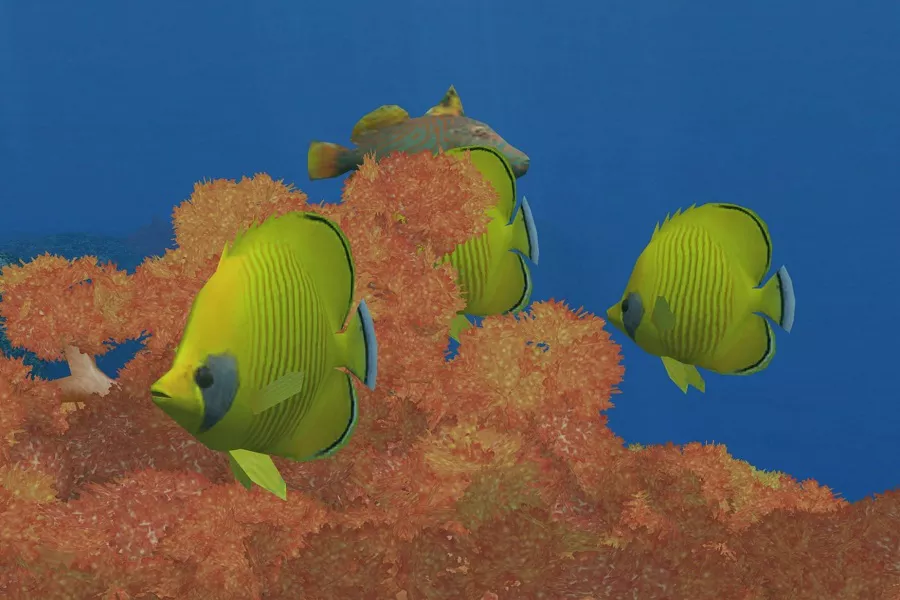What is chinese giant salamander?
Chinese giant salamander (scientific name: Andrias davidianus): It is an amphibian of the class Amphibian and the family Cryptogillidae, living in fresh water. It is a precious wild animal specializing in China, commonly known as “Salamander”. But it is not a fish, but the largest amphibian. The body length is generally about 1 meter, the longest can reach 2 meters, and the weight is 20-25 kilograms, and the largest is 50 kilograms. The body color varies with the color of the living environment. The back is brown, reddish-brown, black-brown, etc., with darker irregular spots on the top, and the ventral surface is light brown or grayish white.
What does the chinese giant salamander look like?
The Chinese giant salamander is the largest of the existing amphibians, with a body length of about 60-70 cm, a weight of about 5-6 kg, and a maximum of more than 1 meter. It is divided into four parts: head, trunk, limbs and tail. The head is large and flat; the length of the head is slightly larger than the width of the head, and the snout is blunt and round; the external nostrils are small, slightly oval, close to the snout; the distance between the nose is greater than 1/2 of the length of the snout; the eyes are small, dorsal, without eyelids; The distance is wide, about 1.5 times the distance between the eyes and the nostrils; the mouth cleft is very large, partial to the ventral position, the upper lip fold is clear at the rear of the mouth cleft, the vomer teeth are arranged in parallel with the upper collar teeth, and the middle of the dentition is slightly concave The tongue is large, oblate, and the front end is attached to the floor of the mouth. The trunk is flat, and the distance between the flanks and crotch is about 1/3 of the full length; the costal grooves are 10-13; there is a wide and thick skinfold on each side of the body. The limbs are short and thick and flat, the forelimbs have 4 fingers and no claws; The hind limbs have 5 toes, the order of toes length is 3, 4, 2, 5, 1, the 3rd toe is the longest, and the interdigital toes are slightly webbed. The body surface is smooth and moist, rich in skin glands, which can secrete milky white mucus when stimulated. The dorsal and ventral surfaces of the head are densely covered with pairs of wart grains, and the wart grains around the orbit are more dense and neatly arranged; the middle of the top of the head, the upper and lower lips and the middle of the throat are smooth There are no warts; the wart grains on the snout and the back of the head are irregularly arranged on the side, and there are rows of wart grains below the orbit, behind the corner of the mouth and on the side of the neck, and the wart grains on the dorsal and ventral surfaces are larger.
living habits of chinese giant salamander
During the day, they often hide in caves, with their heads facing outwards, making it easy to move at any time, prey and avoid enemies. When disturbed, they quickly leave the cave and swim into deep water. It comes out in the evening and at night to be active and prey. When swimming, the limbs are close to the abdomen, and it moves forward by swinging its tail and body to beat the water. It is very ferocious when preying, and often waits among the rocks at the beach mouth. When it finds the prey passing by, it suddenly opens its big mouth and swallows it whole, and then sends it to the stomach to digest slowly.
Adults eat a large amount of food, including fish, frogs, crabs, snakes, shrimps, earthworms and aquatic insects, and sometimes birds and rodents. Interestingly, it is also good at catching a kind of stone crab hidden in the crevices in the creek. It uses the characteristics of the stone crab’s two large claws to clamp things and can’t easily loosen it, and uses its tail with fishy secretions. The tip extends into the crevice of the stone to induce the stone crab to use its claws to clamp. Once the stone crab is found to be “in the middle of the plan”, it will be pulled out immediately.
Due to its slow metabolism, its ability to withstand hunger is very strong when food is lacking, and sometimes it will not starve to death if it does not eat for 2-3 years. The activity gradually decreases from September to October, and in winter, it hibernates under large rocks in caves or deep waters, generally for up to 6 months, until the activity starts in March of the following year. However, it does not sleep deeply and can still crawl when frightened.
chinese giant salamander feeding
The giant salamander is extremely ferocious and very agile. Because the giant salamander is an amphibian aquatic creature, and its sound is like a baby, it is very distinctive. Under the conditions of artificial breeding, the life span can be as long as 50-60 years, so it is very important to arrange a suitable breeding environment for giant salamanders in the artificial environment.
- Pond selection and preparation before placing seedlings
The adult giant salamander has a 5 mu aquaculture pond with a water depth of 2 meters. Requires sufficient water source, self-flow irrigation and drainage. After disinfection, 3 days before the seedlings are released, soy milk made of 2-3 catties of soybeans per mu is poured into the pond to ensure that there is enough biological feed for the bait fish to eat. Before putting down the pond, prepare enough and palatable bait fish, and put carp, silver carp, bighead carp and other summer flower fry before placing the seedlings.
- Seed sources and delivery conditions
The giant salamander seed comes from Shijiazhuang, Hebei Province. The origin is the Irtysh River in northern Xinjiang. The size is 4-6 cm/tail, and the number is 10,000. In May, the giant salamander seed was purchased, the water temperature was kept constant at about 20 ℃, the pH value was 8.0, the ammonia nitrogen was 0.1 mg/L, and the nitrite was 0.1 mg/L.
- Breeding mode
The giant salamander adopts a monoculture mode, 600 animals/mu, and no other fish are raised.
- Water quality control and feed feeding technology
The giant salamander likes clear and thin water quality, with a transparency of about 40 cm. The water quality requirements are similar to those of grass carp, but they are not resistant to low oxygen and are easy to float. For water quality adjustment, biological fertilizers and EM stock solutions are used.
Reminder: For more knowledge about tiger fish, arowana, australian lungfish, please pay attention to: mtedr.com, to provide you with types of aquarium fish and fish care.


























